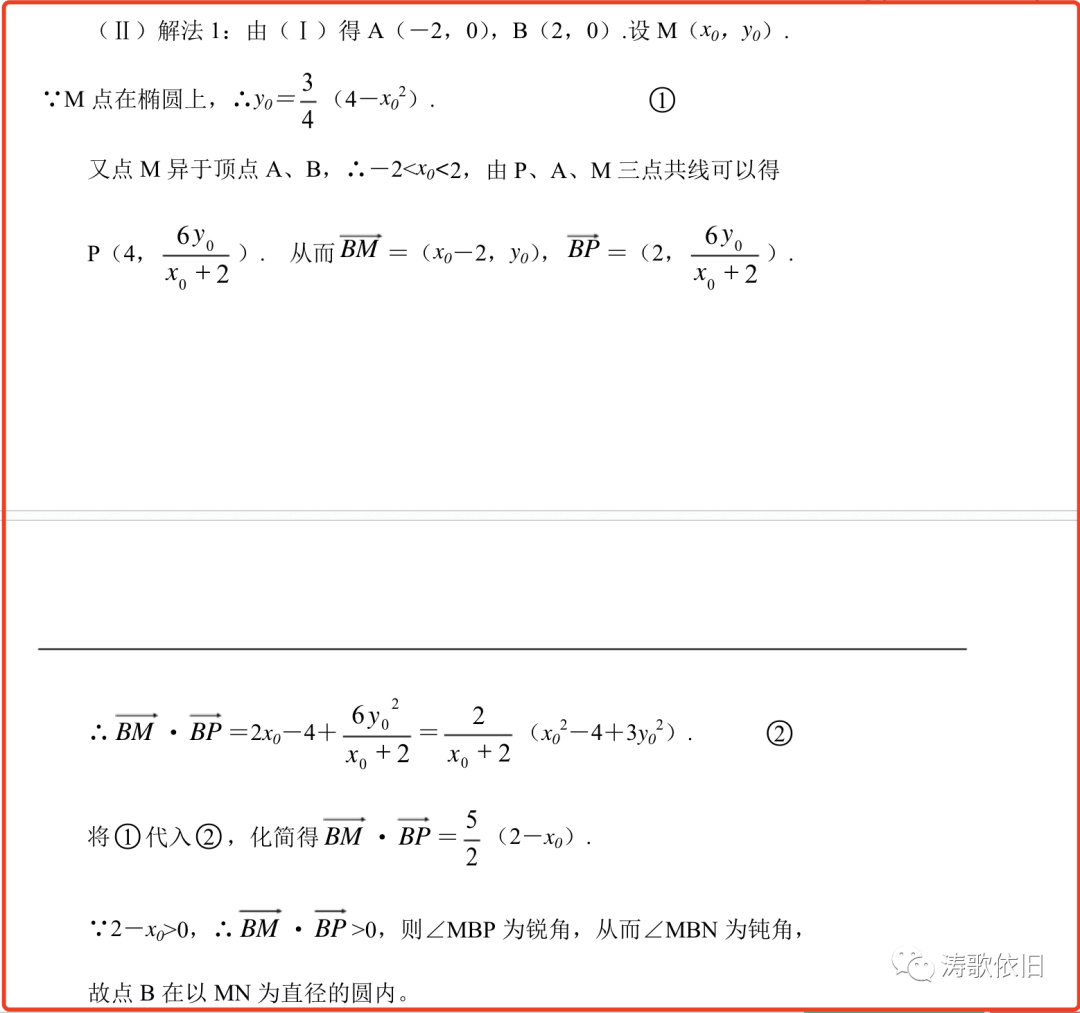Originally published in:

It coincides with the college entrance examination season, and I dreamed about it last night, related to high school, so I simply wrote an article with my own topic and my own choice.
Every year after the college entrance examination, I will take the mathematics test papers of the Hubei college entrance examination. This may be a special hobby. The knowledge points and formulas are basically not forgotten, and the proficiency is definitely not as good as that of the past.

Today, let’s talk about a math proof question in the Hubei college entrance examination:

The first question of this question is very simple, basically it is to send points, it is estimated that it may be 4 points. It is easy to solve the elliptic equation:
x * x / 4 + y * y / 3 = 1

However, the 10 points for the second question is very technical. To prove that the point is inside the circle, I was directly looking for the equation of the circle. The calculations were super-intensive, and I was embarrassed. I was very entangled in the examination room at the time. Should I continue to calculate? Fortunately, the calculation and proof were finally completed, but a lot of time was wasted and thankless. The steps are as follows:

However, after the exam, I realized that we only need to use the vector method to prove that the vector product is less than 0, that is:
Vector BM * Vector BN <0
However, this is still not the most concise method. Both M and N are on the ellipse, there is "uncontrollability" and the calculation is complicated. Note that point P is not on the ellipse, and the abscissa is fixed. After the conversion, the calculation will be much simpler, that is, only need to prove:
Vector BM * Vector BP> 0
If the coordinates of point P are set to (4, p), the coordinates of point M can be obtained, but it must be in the form of a large tuft. It is definitely unwise to place this large tuft on an ellipse. Therefore, when setting the coordinates, you must first set the coordinates of the M point, and then calculate the coordinates of the P point. This is another trick.
The whole process is as follows (very concise):

The diligence of tactics cannot conceal the laziness of strategy. A few years after graduation, I have become more aware of this. Trends, choices, and cognition are more important than hard work. Hard work is just the foundation, nothing more.